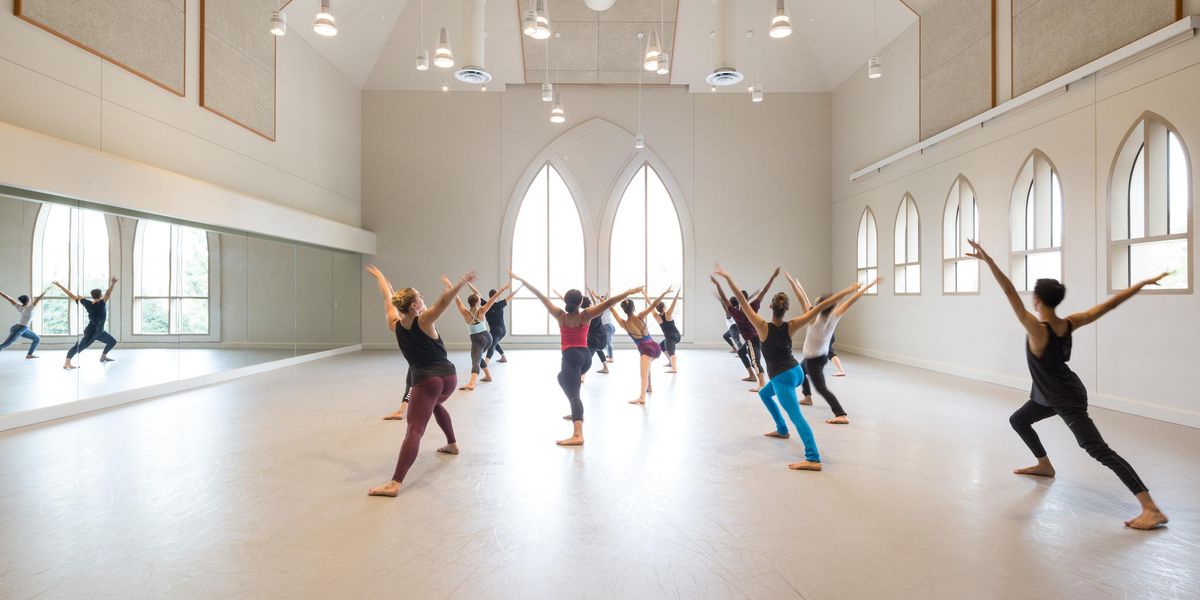Your Body: Loosen Up
Three types of stretches to integrate into your regimen
Most dancers use more than one kind of stretch to achieve flexibility. “Using a range gives me the capability to jump higher and to push off of things faster,” says Elizabeth Dement, Liz Gerring Dance Company’s rehearsal director and a dancer with Big Dance Theater. Dynamic, ballistic, and static stretches help the body achieve its full range. Dynamic stretching involves low-impact, dance-like movement; ballistic demands quick and forceful movements; and static holds the body in a fixed position.
Hypermobile dancers, however, should approach stretching with care. Jennifer Gamboa, a physical therapist who works with The Washington Ballet’s dancers, recommends dynamic stretching for those who are already loose; it lubricates joints and increases blood flow to muscles, while weight-bearing, strength-training, and core exercises like planks help increase stability.
Dynamic “Do’s”
When done before class or rehearsal, dynamic stretching offers an excellent way to increase circulation. The big, moderately paced, dance-specific movements warm the body up. Even walking or biking to the studio can be dynamic stretching. “Studies show that dynamic stretching improves power, coordination, speed, and agility,” says Gamboa. Grand battement is a perfect example. The easy, big swings front and back can be done with attitude and then straight legs.
Ballistic Bounce
Using bouncing movements, ballistic stretches require that dancers warm up fully first. “Ballistic stretching serves a motor-learning function, since repetitive ballistic movements are often part of today’s choreography,” says James Harren, an exercise physiologist who works with Houston Ballet’s dancers. “Doing the stretches actually reduces risk of injury.”
To feel the benefit of ballistic movement, Harren suggests this sequence: Warm up first and then do some gentle stretching on your calf muscles. Then stand on the edge of a stair facing upstairs and do several full-range relevés. Gently bounce 10 to 15 times at the bottom of the stretch, trying to let the heel drop more each time.
Static Strength
In this type of stretch, dancers assume a position and hold it, elongating the muscle to its point of tolerance. Static stretching should never cause pain. However, when you stretch statically can be critical. Wait until the end of the day, after your dancing is done. “Isolated static stretching done before class or a rehearsal decreases strength, power, speed, and agility,” says Gamboa.
Gamboa suggests this static stretch for the hip flexors: Kneel on your right knee with your left foot flat on the floor in front of you. Lean forward, shifting your weight onto the left leg, to feel a stretch across the right hip. Make sure that your left knee does not go past your left foot. Repeat with the other foot forward.
Nancy Wozny writes about health and the arts from Houston.
Egged On
Dancers spend most of their time in the studio, so they often don’t get enough vitamin D. (The body produces this vitamin naturally when exposed to sunlight.) But egg yolks are an excellent source: A single yolk can provide 25 units. Now that eggs no longer get a bad rap from nutritionists for cholesterol content, a hardboiled egg makes a healthy and portable snack. An egg’s 75 calories also include 6 grams of protein and all nine essential amino acids. So cook up a couple and toss them in your dance bag.
Off Label
Think you’d prefer to pop a vitamin D supplement? A recent study in JAMA Internal Medicine journal looked at the contents of 55 vitamin D supplements and found varying degrees of the vitamin. Only two-thirds met the U.S. Pharmacopeial Convention standard. Since the Food and Drug Administration does not regulate vitamin labels, shoppers are on their own in finding reliable brands. However, some companies voluntarily comply with U.S. convention standards, which establish quality levels for dietary supplements and their ingredients. One good way to know that you are getting what you paid for is to buy vitamin supplements that have “USP” in a circle on the center of the label.




